Franklin County's newest solar farm sparks controversy in rural community
It was only after he left Path Valley to join the U.S. Navy in 1976 that Stephen Goshorn grew to appreciate what he left behind.
He spent his childhood plucking weeds while strolling the alfalfa fields of his family’s farm, pulling limestone pieces from freshly plowed fields, baling hay and working the cornfields.
Today, work is underway to turn the property Goshorn’s family owned long ago into the next in Franklin County’s growing number of solar farms.
The developer says it's good for the region, and a land-use scientist says the solar farm may be the best thing for the land. Still, some people in Path Valley don't want solar in their community.
What is the Aspen Road Solar farm?
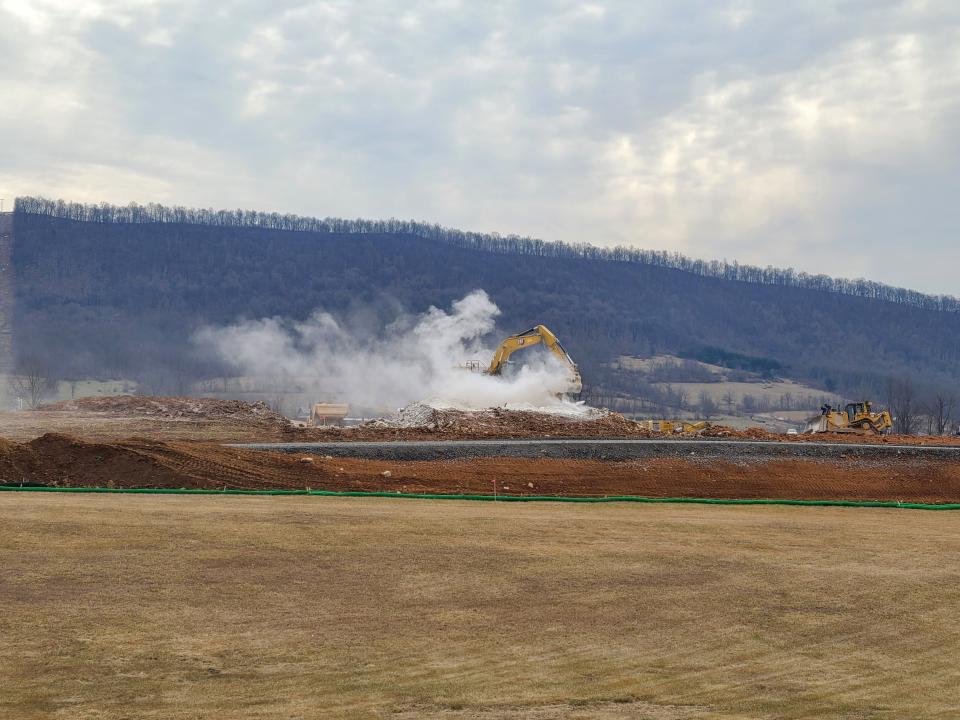
Aspen Road Solar is the name of the solar farm Texas-based renewable energy company Urban Grid is developing on about 1,000 acres in Fannett Township.
The site stretches along Pa. 75 (Path Valley Road) from Spring Run to Dry Run, according to plans provided by the Franklin County Conservation District.
The solar farm will have a capacity of 100 megawatts, which is the most electricity it will generate in an hour when the sun is highest and conditions are ideal. It's among the highest-capacity solar projects in the county.
The electricity generated by the solar farm will power 18,000 homes each year, in the place of 90,000 metric tons of CO2, according to Urban Grid's promotional website for the solar farm.
The power will be delivered to the electrical grid via a new substation and an existing 115 kV transmission line, Val Newcomb, Urban Grid's vice president of economic and community development, said in an email. Mid-Atlantic Interstate Transmission, a subsidiary of FirstEnergy Corp., will build and own the substation and a 240-foot-long loop connecting it to the transmission line, according to Will Boye, a communications representative for FirstEnergy.
The solar farm should be up and running in about a year. After 35 years, the system will be taken out of service and the materials will be removed.
This and other solar projects use land a developer leases from the property owner, often a farming family that can now make money off the land without putting in the work to grow crops or raise livestock. Records show Michael McCartney owns the land that will be home to Aspen Road Solar.
According to Urban Grid, the solar farm will provide millions in tax revenue for Franklin County without the effects of "costly infrastructure or public services, increase(d) traffic or impact (on) prime farmland." The promotional website further says the solar farm will preserve the land so that it can be farmed again in the future and include "wildlife corridors" and other "habitat-nurturing features."
So far, the future solar farm is a massive construction zone. Before the solar panels can be installed, workers need to prepare the land in relation to erosion control and stormwater management.
Impact of zoning: Greene Township denies zoning change for apartment complex
Solar farms usually built in towns with no zoning
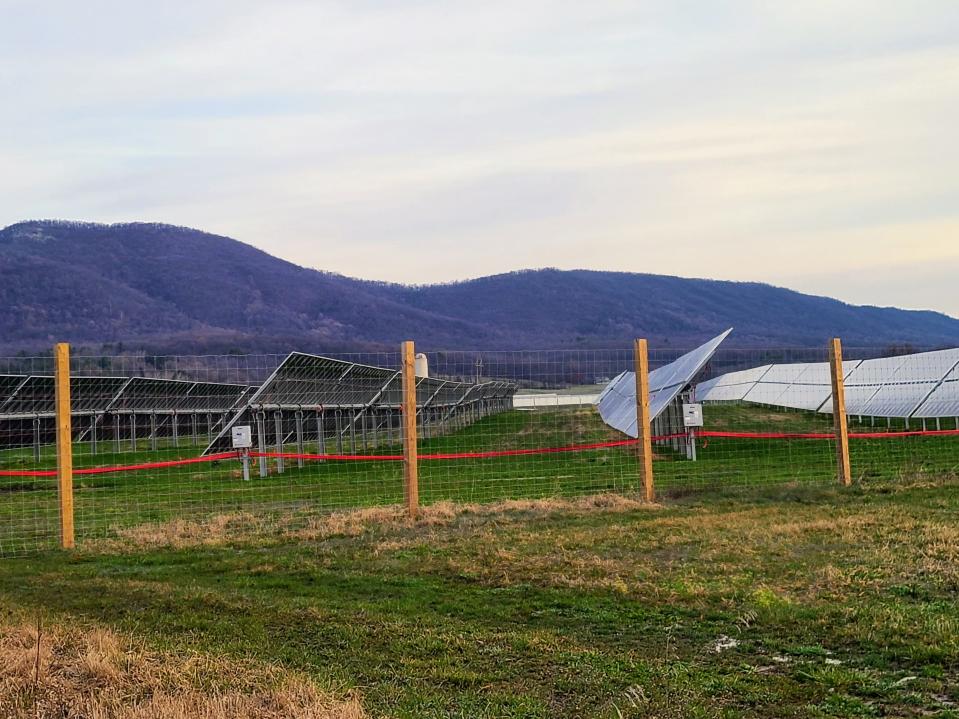
Karen Dixon doesn’t expect to see Aspen Road Solar farm from her home a few miles north on Pa. 75, but she worries that could change and that this project could spark more development.
"We don't want it out by us," she said of solar.
Like many rural townships, Fannett Township does not have zoning to regulate land use.
Of the five solar projects the county conservation district had records for, including Aspen Road Solar, one is in a township with zoning. Located in Quincy Township, there is only one other solar farm in the county that has a smaller capacity and land area.
Zoning's impact on rural communities is a key topic in Dixon's work with the Tri County Regional Planning Commission, which works with communities in Cumberland, Perry and Dauphin counties on environment-related issues. She is the transportation and community planner at the organization.
She said some solar developers see rural communities as "low-hanging fruit," as minimal red tape and limited resources make them easy targets. Concerns about property values, the environment, rights of landowners and other issues affecting residents may not get as much attention as they would somewhere else.
"Path Valley is the poster child of what happens in a community when you don't have zoning.," Dixon said.
A lack of zoning does not mean it's a free-for-all, however. Fannett Township has an ordinance, adopted in 2020, with requirements for solar farms. Developers must get a land use permit and keep it on file at the site of the solar farm, and they must meet requirements throughout the life of the solar farm. The ordinance also requires that a solar farm be dismantled and removed from the property within one year of being decommissioned.
'Solar revolotion': Franklin County solar farms will power Penn State
Residents claim surprise over solar farm
Despite Urban Grid's efforts to inform residents about the solar farm, the arrival of construction vehicles on the property sparked the community’s attention.
In an email to Public Opinion on Feb. 7, Dixon described the unexpected scene she encountered while passing by on Path Valley Road. Goshorn and three others sent emails over the month that followed.
"There seems to have been a tremendous lack of transparency in the process of this entire Aspen Solar situation," wrote former resident Mary Wohler, who remains a member of the board at Path Valley Historical Society.
Newcomb, the Urban Grid executive, said the company began notifying residents three years ago during the planning stages and expanded its outreach as the start of construction neared.
"Urban Grid sent notifications by mail in 2021 to impacted residents of the project to coincide with our submission of the Aspen Road Solar proposal to Fannett Township officials," Newcomb wrote in an email. "In January of this year, we notified 240+ residents within ¼ mile of the project by mail that preliminary construction would be underway in March."
The project attracted little, if any, attention from residents as an item on the agenda at many Fannett Township Board of Supervisors meetings over the past three years, according to Georgia O'Donnell, the township secretary-treasurer. The township's engineer and attorney were frequently in contact with the Urban Grid team throughout the planning process.
With Newbomb attending to share information from Urban Grid about the project and take input from the community, the March 12 meeting attracted dozens of people. Most, if not all, were against the project.
Shippensburg, Littlestown square off: Shippensburg bests Littlestown on the diamond. See photos from the game.
Here are the facts about solar farms, from a land use scientist
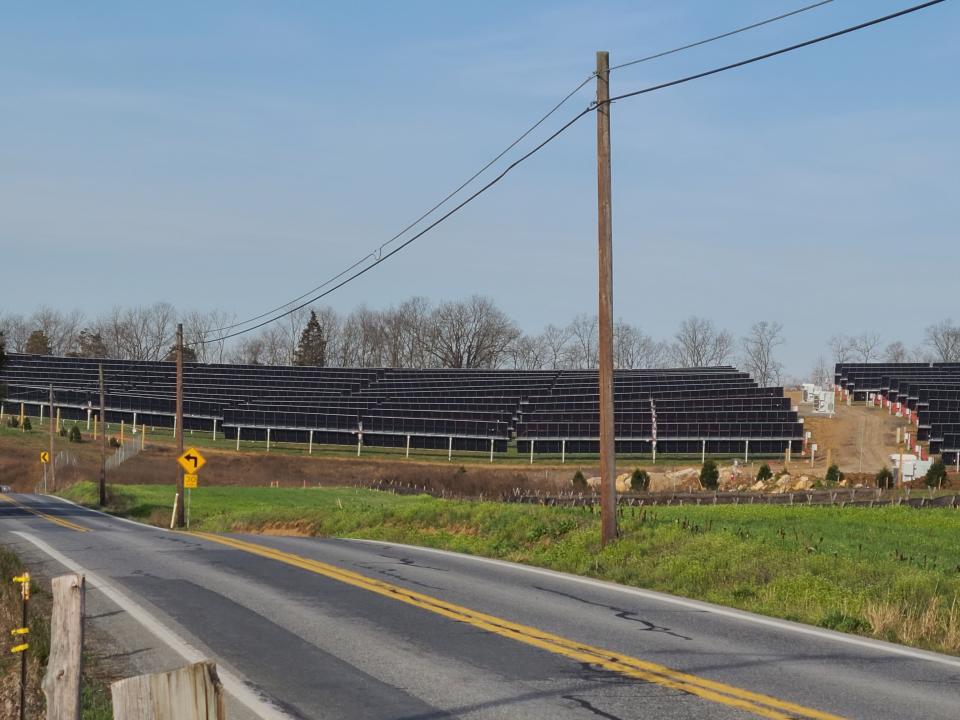
Solar farms do not hurt the land on which they sit - they may even improve it, according to Dr. Russell Hedberg II, director of the Center for Land Use and Sustainability at Shippensburg University.
"At least for the things that I study, it doesn't seem to be an environmentally negative land use. If anything, there may be benefits," he said.
Hedberg is an associate professor in the department of geography and earth science at SU. His interest in solar stems from his research on issues relating to food systems, including soil health.
Solar farms affect land no more than a regular farm, Hedberg said. There are no chemicals that would risk groundwater contamination, and usually the only parts of a solar farm that enter the ground are the metal poles that hold the panels.
"The wiring that delivers power back to relay stations is all above ground. There's literally no way that power could seep into the ground. Even if it did, when power hits the ground it ends," the professor said.
Construction affects the land more than anything else in terms of a solar farm, but developers typically look for terrain that will best fit their needs, Hedberg said.
"There are some impacts from construction, but in my research and experience, it's not that different from agricultural impacts, generally speaking," Hedberg said. "This is a new land use so we can't say for sure, but it is probable that the impacts that take place during siting (which includes grading) will recover over the course the solar farm occupies the ground."
As for concerns that solar projects will forever turn rural farms into seas of reflecting glass — and perhaps become the 21-st century version of Pennsylvania's abandoned oil and gas wells — Hedberg is confident contracts will work as intended.
"When the leases are constructed, in every case that I'm aware of, there is a decommissioning clause in the lease that requires the developer who's leasing the land to remove the equipment," he said.
See "Bye Bye Birdie": Greencastle-Antrim High School Drama Club presenting the musical comedy 'Bye Bye Birdie'
Solar may be 'most benign' of changes in rural Pa.
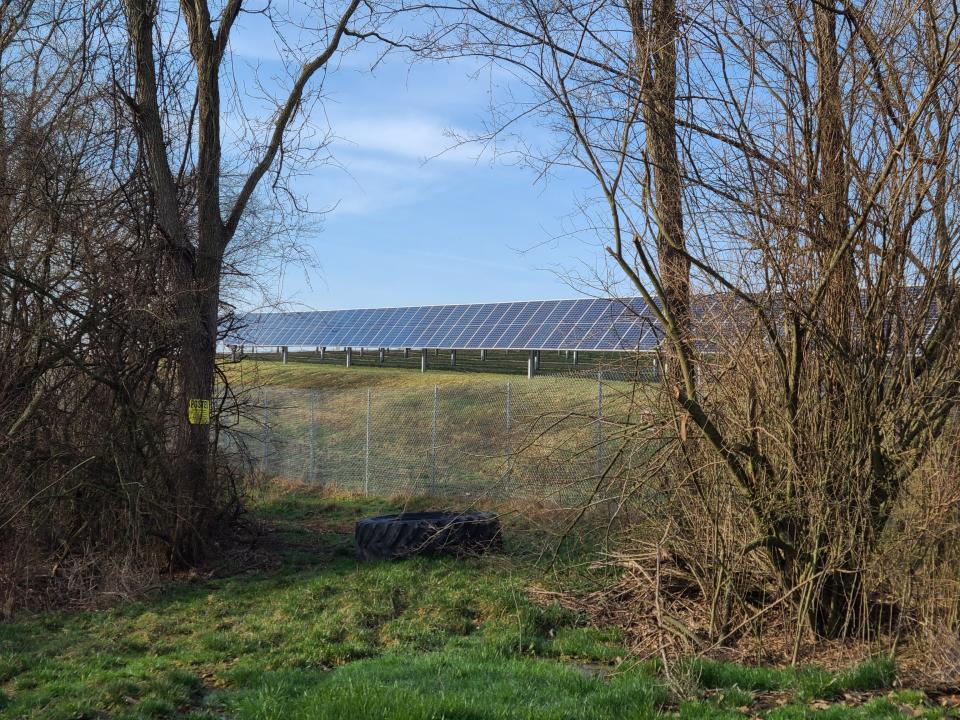
Solar provokes fear of change, especially in rural communities like those in Franklin County already dealing with a fast-changing world. Hedberg encouraged people to be optimistic.
"My position is that of the things, of the changes coming for rural parts of Pennsylvania, solar is perhaps the most benign of them. I think one thing we see with solar as a land use is, unlike pressures on aging farmers, solar actually allows farmers to keep their land and potentially allows them to stay in farming. ... There's no reason to think that when the solar lease ends, they can't go back to farming the land.
"The land might be improved. And we do need renewable energy. People might not like the way it looks, and that is something that as a public we should have a talk about, but there is not much to change about solar as a land use and, in my scientific experience, not much to be lost."
Cyber charter school funding: What could cyber charter school funding reform mean for local districts?
Where are other solar farms in Franklin County?
If you live in Franklin County, you've probably seen a solar farm or two in your travels. One is even part of the largest solar project in Pennsylvania.
The following list was compiled using permit applications provided by Franklin County Conservation District via a records request, the Solar Energy Industries Association’s “Major Project List," individual project websites and other sources.
Peters Township Municipal Authority Solar Field
This 391.23-kilowatt project (1,000 kilowatts = 1 megawatt) consists of more than 1,000 panels on 2.43 acres at Peters Township’s water treatment plant, 2308 Fort Loudon Road, Mercersburg. Peters Township Municipal Authority purchases the electricity generated, which is 540,127 kilowatt hours annually.
Great Cove Solar II
Eighteen solar array fields are situated on multiple parcels in Peters and St. Thomas townships, connected at underground conduits that converge at a substation. It has a sibling in Fulton County, on Great Cove Road just south of McConnellsburg. With 485,000 solar panels on 1,600 acres and a capacity of 220 megawatts between the Franklin and Fulton sites, this is the largest solar project in Pennsylvania,
Owned and operated by AES Technologies, the electricity generated by the Great Cove system is purchased by the University of Pennsylvania to power its campus and health system facilities in the Philadelphia area. Through this solar power, the university meets 70% of its electricity demand.
The Franklin County solar fields are situated in two areas on Warm Spring Road, in Peters Township (across from Hager Road) and in St. Thomas Township (just north of the village of Williamson). These solar fields together have an output of 150 megawatts.
Blair Valley Solar Project
This 190-acre solar farm is located a couple miles south of Mercersburg, at the intersection of Corner and Blue Spring roads.
Quincy Village Solar
The project consists of two solar arrays on the Quincy Village campus, 6596 Orphanage Road, Waynesboro. “Solar Array South,” accessible via Anthony Highway, takes up just under 2 acres. “Solar Array North” takes up about half an acre
Elk Hill Solar 1 and 2
These 25-megawatt and 17.5-megawatt solar farms, which were completed in 2021 and 2022, produce 20% of the electricity the Southeastern Pennsylvania Transportation Authority needs every year.
It consists of 120,000 solar panels on 320 acres.
Elk 1 is at 12947 Buchanan Trail West, Mercersburg. Elk 2 is on Letzburg Road, just south of Buchanan Trail West, in Peters Township.
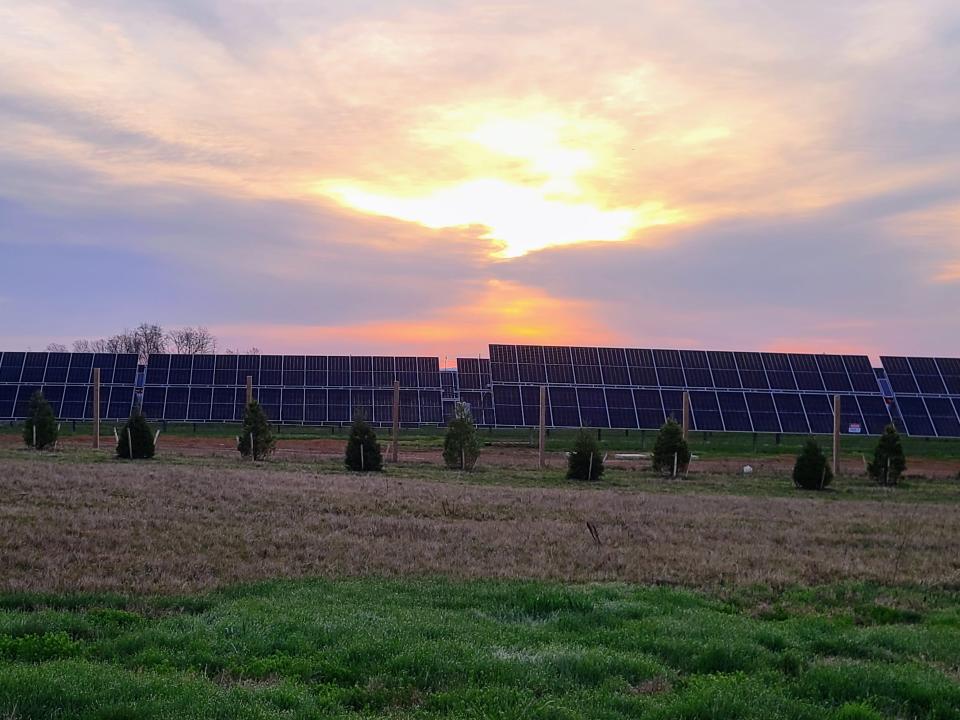
Whitetail 1, 2 and 3
These three solar farms, with 150,000 solar panels on 500 acres, produce energy for the Penn State University system. With a total output of 53.5 megawatts, they generate 25% of the electricity Penn State uses each year. Lightsource bp owns and operates the three sites, which were announced in 2019 and went online in 2020.
Locations:
Whitetail 1: 10,500 Mowerville Road, Newburg
Whitetail 2: 1875 Pioneer Drive, St. Thomas Township
3308 St. Thomas-Williamson Road, St. Thomas Township
Amber South can be reached at asouth@publicopinionnews.com.
This article originally appeared on Chambersburg Public Opinion: Some worry Path Valley solar farm will generate too much development

